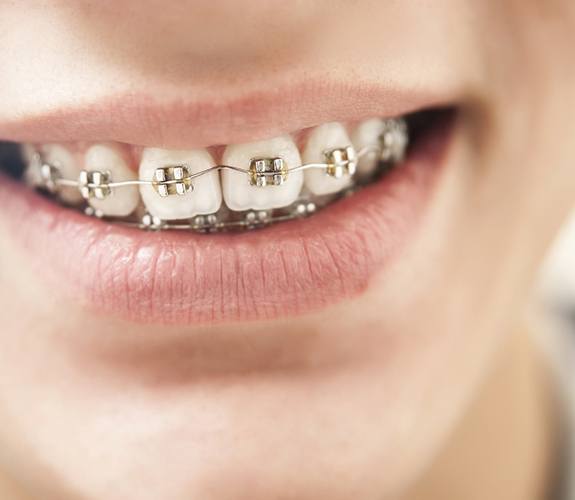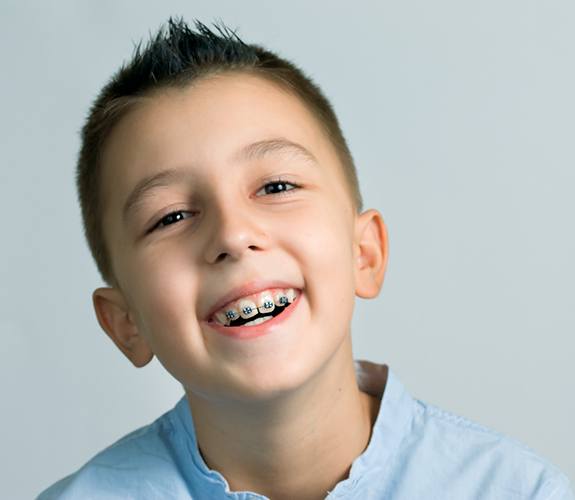
Traditional Braces – Naperville, IL
The Time-Tested Way to Straighten Teeth
Many orthodontic treatments have been devised over the years, but few are as trustworthy as traditional metal brackets and wires in matters of straightening misaligned teeth. While braces are normally recommended for children, adults can benefit from wearing them as well, allowing them to speak more clearly and eat a variety of foods without issue. At Grand Dental – Naperville, we can offer traditional braces as a solution for many common orthodontic problems. Call today to schedule an orthodontic consultation to take your next steps.
Why Choose Grand Dental – Naperville for Traditional Braces?
- Treatments for Patients of All Ages
- Time Tested Orthodontic Solutions
- Early, Lates, and Saturday Hours
How Do Traditional Braces Work?

Your teeth are anchored to your jaw via ligaments, and while they’re meant to stay firmly in place, it is possible to move them slightly with a small amount of pressure. This is how braces work; brackets are attached to the teeth and linked via wires that are held in place with elastics. The wires gradually push the teeth towards their proper position. You will need to return to our office every 4 to 6 weeks so that we can tighten the wires, allowing them to continue exerting the necessary force in the proper direction.
Traditionally, an orthodontic treatment using braces lasts between 18 months and 3 years; the more complex the issue is, the longer the treatment is likely to be. It is impossible to know exactly how long treatment will take without first examining the mouth, which is why your first step needs to be to schedule an orthodontic consultation with us.
What Orthodontic Issues Can Braces Fix?

Traditional braces are viable for correcting a wide variety of orthodontic problems, including those that are too complex for clear aligners or other orthodontic treatments. The following are some particularly common orthodontic situations:
Bite Misalignment
When the upper and lower arches aren’t properly aligned, the forces of the bite may be poorly distributed, wearing down the teeth. Braces can be used to correct overbites, underbites, crossbites, and similar issues.
Crowded and Crooked Teeth
Teeth that are crowded too close together are unattractive, and it is generally difficult to clean them properly. Correcting crooked teeth with braces improves your appearance and your ability to maintain good oral hygiene.
Gapped Teeth
Bacteria can accumulate in unusually large gaps between the teeth very easily. These spaces can be closed with traditional braces.
Caring for Your Braces

Optimal oral hygiene is essential for ensuring that cavities and gum disease do not interrupt orthodontic treatment. You will be given advice for brushing and flossing with braces; for example, we can advise you on the correct angle to hold your toothbrush so that you can clean around your wires.
Braces can be damaged by hard, sticky, or crunchy foods, so one needs to be very mindful of what they eat during their treatment. Also, a mouthguard must always be worn while playing sports to avoid physical damage to the orthodontic appliance.